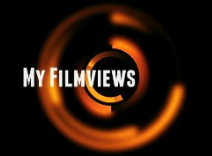
Images can be very powerful. The can change someones opinion or generate a specific feeling about a war. Lots of war have one iconic image which people will remember when you mention it. If you think about Vietnam, a lot of people will know the picture of a man being executed by the army. If you think about the war in Iraq, the video of Sadam’s statue being taken down jumps to mind. Countries use these images effectively to shape an opinion, even though the reality might be different.
Flags of Our Fathers focusses on the picture of American soldiers raising the flag on the island of Hiroshima. It was a picture which was used to give the American people hope, but it was also used as something to raise money to fund the war.

The island of Iwo Jima, south of Japan, was a very important strategic spot for the Americans to plan their invasion of Japan. It was important to conquer it and get it in American hands. Japan wasn’t willing to let this happen and stationed a lot of army men on the island to defend it.
This movie shows part of the battles that took place between the two countries and does this in a way which reminded me of a couple of scenes in Saving Private Ryan. As Steven Spielberg was attached to this project, it’s something that’s hardly surprising. Clint Eastwood directs this movie and manages to convincingly bring it all to life, with downright frightening results. You wouldn’t want to be there fighting.
The battles are not the only thing which the movie shows, as it mainly focusses on the experiences of three men (played by Ryan Phillippe, Jesse Bradford and Adam Beach) who supposedly planted the flag. The army makes them part of the PR-machine and they have to travel through the US to show their faces at various fundraisers. They are described as heroes, which they themselves don’t feel, but they have to play along to help their country.

Although this is an interesting movie, it tries to show way too many timelines. There’s the war on the island, the tour of the men through America and a couple of shots of the men as veterans talking about the past. By telling the story in this way it missed the focus to keep my attention at all times. A chronological way of telling the story would probably have worked better and the part with the veterans could have been cut as it added nothing to the story. Despite these negative points it is a movie that is worth watching, especially in combination with Letters from Iwo Jima, which shows the Japanese side of the story.
Score: 7
